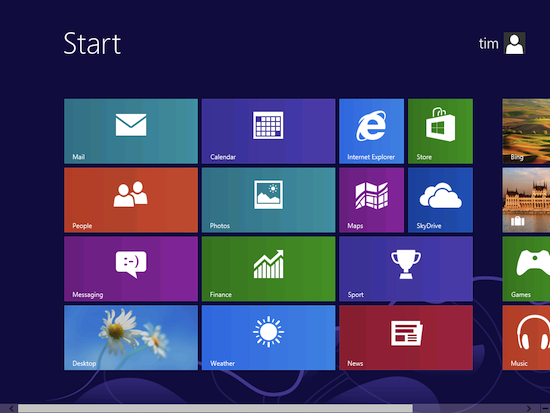
A report published by Digitimes says shipments of smartphones with displays 5-inches and larger are expected to grow 136% this year as compared to 2012. In other words, a total of 60.4 million units are expected to ship worldwide with a screen size of 5-inches and higher in 2013. Four years from now that number will climb to 146 million units. It's going to be a great year for Corning employees.
I appreciate choices but I'm still not convinced display size is the best way to market a handset. It's not a true feature in the way that advanced camera optics or expandable storage adds true functionality to smartphones and tablets.
The display of your smartphone might be the most important part of your device to you. It's important to me, too. What it comes down to is how you use your gadgets. What do you use it for? Manufacturers have thoroughly spoiled consumers with varying degrees of displays sizes and resolutions as of late. But does it really matter if the only true difference is an extra row of icons?
When it comes to display size and resolution, I have a few preferences. I hate pixels so they must be hidden. Any display that offers a pixel density of 300 and higher is fine with me. In terms of color saturation, the more realistic and warm, the better, even though that generally means AMOLED displays and their cooler operating temperature (along with better battery life) are ruled out. I prefer the SLCD2 and IPS-LCD displays gracing most HTC handsets, the iPhone 5, and the Nexus 4 and LG Optimus G. But as proven by Apple's 51% market share in the U.S., not everyone thinks bigger is better.
I prefer a larger display when I'm not on the move. Any minute I have time to surf the Interwaves or watch anything on YouTube, I want a bigger display. But these are the only times when I could justify a screen 5-inches or larger. Having said this, there is no doubt in my mind that Samsung's Galaxy Note II is as awesome as you have voted in the People's Choice Rankings, but there's no denying that Samsung's TouchWiz is part of the reason. I agree with Aaron Baker when he says mobile operating systems might be limiting handset functionality.
I'm afraid screens are getting bigger for the same reason Apple hasn't updated iOS. (Hint: there's no reason.) I truly believe the abnormal 1136x640 resolution of the iPhone 5 was more of a pitch from Apple to their developers to increase their vested interest in Apple's ecosystem, than a feature to consumers. Contrary to popular belief, I find it hard to believe Apple would "go with the flow" and do what every other display manufacturer did and increase the screen resolution proportionally. But I accept it. It was a business decision. That's just how Apple rolls.
Whatever operating system you prefer, each flavor offers similar functionality across the board. Where iOS devices maintain the same familiar grid across all iDevices, Android once morphed depending on screen density (DPI). That being said, Windows devices have completely different appearances between smartphone and tablet-form and I believe this is a smart move.

Windows RT has been licensed like no other these first few months of 2013; I doubt this has gone unnoticed to competitors. There's even talk of an iPad Pro to directly compete with Microsoft's Surface Pro, yet the Surface Pro isn't even out yet. If there's any way to judge Microsoft's success with their recent OS-revamp to accommodate multiple screen sizes, look no further than the 2013 influx of tablets running Windows RT which adds functionality to that screen real estate.
Android has recently decided to mimic Jelly Bean across varying screen sizes. They're copying what Apple pioneered with the iPhone and iPad and I think it's a mistake. I love the Nexus 7 but it is way more fun to navigate in Honeycomb-style tablet form. That's why I kept my Asus Transformer longer than my Nexus 7.
Just a few days ago, Evan Selleck asked if iOS gives credence to the 7.9 and 9.7-inch screens gracing Apple's iPads. Nowhere in the tablet ecosystem does additional screen real estate seem more superfluous than on an iPad.
We don't use tablets the same way we use smartphones, so why do they function the same? Where are those additional toggles, productivity features, and tablet-optimized apps?
I've learned to appreciate TouchWiz in both smartphone and tablet-form because of the features and optimizations Samsung adds to their devices. These are features because they enhance the user experience. Each operating system should behave differently at different sizes. For the same reason you probably wouldn't buy a minivan if you're single, Apple, BlackBerry, and Google should add features at different resolutions.
No matter the screen size, the phone app, messaging app, and standard alarm and calculator apps remain largely the same across all handsets. But why? It would make sense to update Jelly Bean, iOS, or Windows Phone to add features that manufacturers like Samsung has done with their Galaxy S III and Galaxy Note II.
I'm interested to hear how you feel about screen sizes, reader. Do you find value in extra real estate even if it only means an additional row of icons? Why do you want larger displays? Personally, I'm very close to sealing the deal on a Galaxy Note II because I have to know what all the fuss is about! Plus, those specs seem future proof! Let me know how you feel about screen sizes and why you approve, or disapprove of bigger displays below. Cheers, 2013!